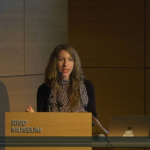
ISABEL LAFUENTE
Sidia
WILSON PRATA
Sidia
[s2If is_user_logged_in()]DOWNLOAD PDF
[/s2If]
[s2If current_user_can(access_s2member_level1)]
[/s2If]
Agile methodologies have taken hold as a model to be followed in software industry. Among them, Scrum is one of the most used frameworks and has a high level of acceptance among a large range of organizations. The underlying premise of Scrum is that by implementing an iterative and incremental process of development, an organization can become more efficient in coping with unpredictability, thus, increasing the chances of delivering business value. In this paper we use the context of SIDIA, an R&D center based in Manaus (Brazil), to look at how Scrum is practiced, by following Post-its notes, which are commonly used in agile landscapes.
Following previous work on the idea of thinking through things (instead of thinking about things) as an analytic method to account for the ethnographic experience (Henare, 2006), the purpose here is to draw out the capacity of these objects to...


